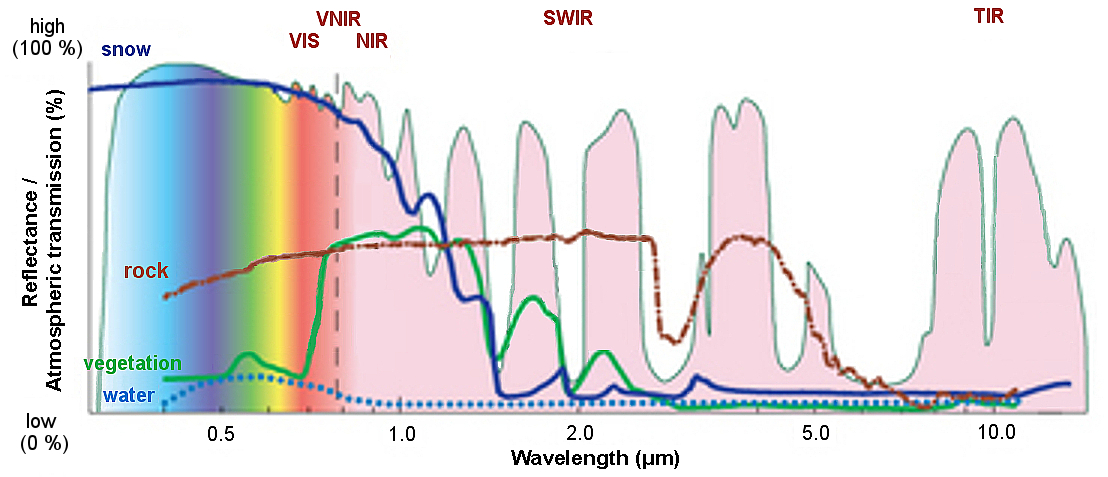Snow detection in the visible spectrum
The reflectance values of different surfaces can be plotted as functions of wavelength called "spectral response curves" or "spectral signatures" (Fig. 1). Differences among the spectral signatures of landscape features are used to classify remotely sensed regions, since the spectral signatures of similar features have similar shapes. Snow cover has a high surface reflectance in the visible part of the spectrum (VIS), and is represented as a white region in visible images. However, in the visible spectrum, it may be difficult to distinguish snow from other Earth features, such as clouds or bright sand. Snow retrieval from optical satellite measurements requires clear skies and sufficient daylight. This limits the applicability of satellite measurements for snow detection. In short-wave infrared (SWIR) snow has a low reflectance and this enables distinguishing between snow and other bright surfaces.
Figure 1: Reflectances of different surfaces. Credit: Andreas Kaab, University of Oslo.
Exercise 1
Which feature has the spectral signature most similar to snow in the visible spectrum?
The correct answer is: b) Clouds.
At all wavelengths of visible light, clouds have very similar reflectance values as snow. This makes it difficult to distinguish these two features.
